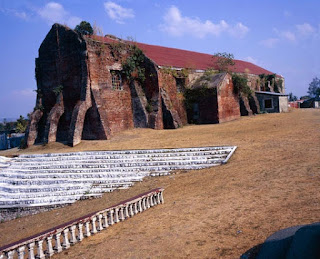
NEW SPECIES. This undated handout photo shows an orchid Dendrobium lydiae in Bukidnon province, Mindanao. Five new orchid species have been discovered in increasingly denuded Philippine mountains, highlighting the need to protect forests in one of the world's most biologically diverse countries, conservationists said Friday. Photo by Miguel David de Leon/AFP
MANILA, Philippines – Five new orchid species have been discovered in remote Philippine mountains, protected from poaching because of an insurgency in the region, conservationists said Friday, June 24.
The species are found only in a mountain range on the rebellion-torn Mindanao area in the southern Philippines and have eluded those cataloguing plant life for 200 years, expert Miguel David de Leon told Agence France-Presse.
Poaching of wild orchids mostly by locals is rampant in the Philippines, with some communities illegally harvesting them without permits for export or to sell them along roads.
But Mindanao region is among the country's areas wracked by one of Asia's longest-running insurgencies, whereby Maoist guerrillas retain support among the poor in the farming and mountainous communities.
"The insurgency problem helps prevent poachers or would-be orchid-hunters from entering the forests," said De Leon, a plant and wildlife conservationist who found the species while trekking the mountains of Bukidnon province in Mindanao.
"These areas are very isolated. The terrain is treacherous, accessible only by foot and occasionally, a motorcycle or horse," he added.
The finds, first published in the German Orchideen Journal this year, include a dazzling yellow bloom flecked with brown spots.
"It is one of the most attractive among members of the genus," said De Leon.
"(The) other species are red or purple but this really stands out because it's the brightest shade of yellow."
De Leon, Australian taxonomist Jim Cootes and Filipino research associate Mark Arcebal Naive named their most vivid find Epicrianthes aquinoi, to honor outgoing Philippine President Benigno Aquino whose family uses the color yellow in political rallies.
Other species they discovered include a pure white and a red-lipped white Dendrobium, a dark red Epicrianthes, and a green slipper orchid with red stripes.
Cootes, who has written 3 books on Philippine orchids, told AFP the discoveries showed the rich biodiversity of the Southeast Asian nation, with more species awaiting discovery.
"We need to preserve what is left because the variation within the different species is so high that it is almost priceless," he said.
"The mountains throughout the archipelago need to be preserved," he added.
US-based Conservation International lists the Philippines as among 35 biodiversity hotspots – areas with the world's richest but most threatened plant and animal life.
Deforestation that plagues mountains across the Philippines also destroys orchid habitats as well as shrubs, fungi, and algae that keep the forests alive. – Rappler.com
































